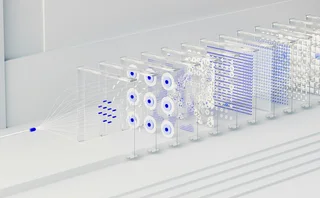AFTAs 2022: Most cutting-edge IT initiative—Morgan Stanley
Project: Data Driven Risk Assessment (DDRA)
Overview
Data Driven Risk Assessment (DDRA) automatically generates Technology Software Change risk scores. Gathering data from multiple systems pertaining to a proposed change, it applies pre-defined weighted points against 12 criteria and calculates a numerical risk score and a “lowest,” “low,” “moderate” or “high-risk” categorization. DDRA moved to general availability in January 2022.
What problem does it solve?
The purpose of DDRA is to increase technology stability by improving the accuracy of Software Change risk assessments, and it aims to do this while reducing human subjectivity and bias in favor of consistent data.
“Thanks to the Data Driven Risk Assessment, we can now fully automate the delivery of low-risk software changes into production, delivering on the promise of DevOps with faster delivery of changes, while increasing operational stability and quality.”
Trevor Brosnan, managing director and distinguished engineer, Morgan Stanley
How does it solve the problem?
Changes assessed as lowest risk can be fast-tracked through the “Systematic Change” process. End-to-end automation with authorization inherited from the Software Delivery Lifecycle process eliminates manual effort. DDRA currently represents over 18% of software development lifecycle (SDLC) change; it is 40 times less likely to cause a major incident; and it encourages the adoption of modern techniques—for example, mid-week releases.
Future developments
Morgan Stanley will override and replace its legacy manual risk assessment process with DDRA by mid-2023. By the end of 2023, the firm expects that 60% of all SDLC change will be conducted through the application and an automated risk assessment for non-SDLC change will be built using DDRA as the foundation.
Why they won
Over the years, these awards have witnessed a number of innovative and genuinely transformative initiatives, but none has held the potential for enterprise-wide change to the extent that Morgan Stanley’s Data Driven Risk Assessment (DDRA) project does. The DDRA initiative currently manages just under a fifth of the firm’s software development lifecycle (SDLC) changes, which by the end of next year is set to increase to more than half, while the framework’s ability to massively reduce the likelihood of major incidents―and therefore operational risk―on the back of introducing software changes is truly impressive.
Only users who have a paid subscription or are part of a corporate subscription are able to print or copy content.
To access these options, along with all other subscription benefits, please contact info@waterstechnology.com or view our subscription options here: https://subscriptions.waterstechnology.com/subscribe
You are currently unable to print this content. Please contact info@waterstechnology.com to find out more.
You are currently unable to copy this content. Please contact info@waterstechnology.com to find out more.
Copyright Infopro Digital Limited. All rights reserved.
As outlined in our terms and conditions, https://www.infopro-digital.com/terms-and-conditions/subscriptions/ (point 2.4), printing is limited to a single copy.
If you would like to purchase additional rights please email info@waterstechnology.com
Copyright Infopro Digital Limited. All rights reserved.
You may share this content using our article tools. As outlined in our terms and conditions, https://www.infopro-digital.com/terms-and-conditions/subscriptions/ (clause 2.4), an Authorised User may only make one copy of the materials for their own personal use. You must also comply with the restrictions in clause 2.5.
If you would like to purchase additional rights please email info@waterstechnology.com
More on Awards & Rankings
American Financial Technology Awards 2025 winner’s interview: Connamara Technologies
Connamara Technologies’ recent win in the AFTAs on the back of its EP3 platform
Buy-Side Technology Awards 2025 winner’s interview: CompatibL
The chairman of CompatibL discusses the reasons for the firm’s success in the Best buy-side AI platform category of the Buy-Side Technology Awards 2025.
AFTAs 2025: Best data provider—Allvue Systems
Product: Private Credit Intelligence
AFTAs 2025: Best IT team—TCW Group
Team: TCW Group’s Investment Technology Team; Project: Engineering Solutions—ABF and insurance launches during Aladdin stabilization
Buy-Side Technology Awards 2025 winner’s interview: 73 Strings
73 Strings’ win in the BST Awards 2025 Best middle-office platform category
AFTAs 2025: Most cutting-edge IT initiative—J.P. Morgan
Project: Vida Beta One
Buy-Side Technology Awards 2025 winner’s interview: S&P Global Market Intelligence
S&P Global Market Intelligence’s success in the first year the Best private markets data provider category has been on offer.




